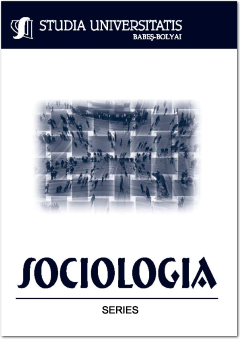SOCIOLOGIA ISTORICĂ A LUI HENRI H. STAHL (THE HISTORICAL SOCIOLOGY OF HENRY H. STAHL) BY ȘTEFAN GUGA. CLUJ-NAPOCA: TACT PUBLISHING HOUSE, 2015, 387 PAGES
"SOCIOLOGIA ISTORICĂ A LUI HENRI H. STAHL" (THE HISTORICAL SOCIOLOGY OF HENRY H. STAHL) BY ȘTEFAN GUGA. CLUJ-NAPOCA: TACT PUBLISHING HOUSE, 2015, 387 PAGES
Author(s): Călin CotoiSubject(s): Social history, History and theory of sociology
Published by: Studia Universitatis Babes-Bolyai
Summary/Abstract: In the last few years, inside the institutional landscape of Romanian social sciences, the history of Romanian sociology has gained a paradoxical position. On one hand, it is present, through a substantial number of people and presentations at any local conference or workshop, and displays a coherence and persistence that seem to be lacking in all other recurrent themes of contemporary Romanian sociology. On the other hand, it is uninteresting for the vast majority of individuals claiming sociological credentials, from universities and research institutes to the more business-oriented parts of the profession. The history of Romanian sociology mostly means, for the right or wrong reasons, the history of the sociology school from Bucharest, the so-called “Gusti School”. The concomitant visibility, and lack of importance of this kind of history for the mainstream Romanian sociology is rooted in the workings of a mechanism for symbolic legitimacy, and historical reconstruction linked to the interwar period. This hallowed period in the history of Romanian culture works as an important source of cultural relevance in today’s cultural fields and arenas. Present day intellectuals are able to create interwar ancestors, lines of continuity are still being built and carefully managed. The legitimizing link to Western culture is gained, safely, in an indirect way. As the interwar period is considered the highest point of cultural integration into European modernity, by constructing a reliable path to the interwar culture, modernity can be reaffirmed and the troubling Communist past can be easily set aside.
Journal: Studia Universitatis Babes-Bolyai - Sociologia
- Issue Year: 60/2015
- Issue No: 2
- Page Range: 113-120
- Page Count: 8
- Language: English

